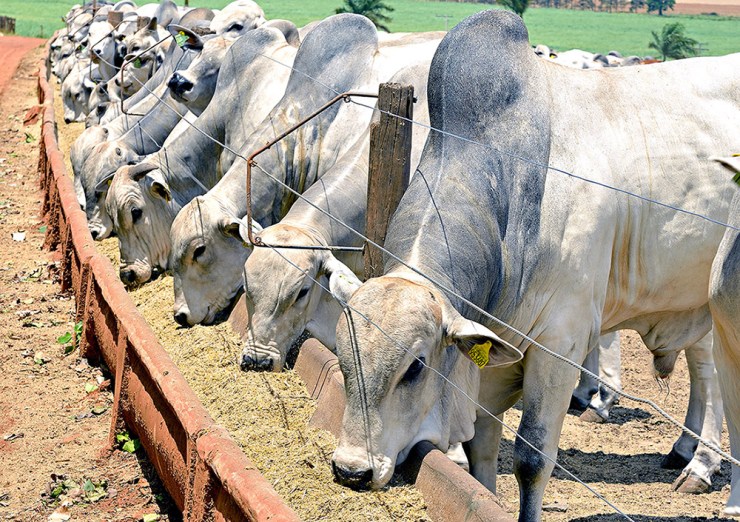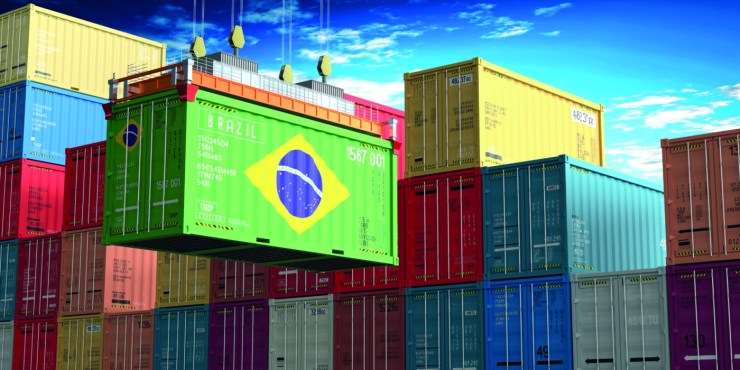Corn and soybean exports from the Northern region have more than doubled. The volume shipped through the ports of the Northern Arc has increased by around 57% in recent years, rising from 36.7 million tons in 2020 to 57.6 million tons in 2024. This growth is the result of investments in multimodal infrastructure, with the railway system expanding and waterways increasingly used in the Amazon region. The proximity to new agricultural frontiers, such as MATOPIBA (Maranhão, Tocantins, Piauí and Bahia), influences these investments, consolidating the Northern region as an important point for the flow of agricultural production.
 The data is in the Agrologistics Yearbook 2025, a publication launched this Thursday (05) by the National Supply Company (Conab). “Brazil is moving towards a new agro-industrial logistics configuration, in which the strengthening of the Northern Arc, investments in railway and waterway infrastructure, and the expansion of storage capacity, especially on rural properties, are fundamental pillars to increase the competitiveness of agribusiness on the international scene”, reinforces the Company's president, Edegar Pretto.
The data is in the Agrologistics Yearbook 2025, a publication launched this Thursday (05) by the National Supply Company (Conab). “Brazil is moving towards a new agro-industrial logistics configuration, in which the strengthening of the Northern Arc, investments in railway and waterway infrastructure, and the expansion of storage capacity, especially on rural properties, are fundamental pillars to increase the competitiveness of agribusiness on the international scene”, reinforces the Company's president, Edegar Pretto.
According to the Yearbook, the ports of Santos (SP), Paranaguá (PR) and those located in the Northern Arc (such as Itaqui, Barcarena and Santarém) concentrated 81.2% of Brazilian soybean and corn exports in 2024. The North region of the country alone was responsible for shipping around 38% of this shipment. “The reduction in freight values, represented by the shorter distance between important production areas and ports and by the internalization of fertilizers, to serve the central region A has induced market agents to prefer this route”, explains Conab's superintendent of Operational Logistics, Thomé Guth.
Among the ports of the Northern Arc, Itaqui (MA) and Barcarena (PA) stand out, where the volume of corn and soybeans exported in the period from 2020 to 2024 grew 80.3% and 70.3% respectively. In Maranhão, the increase in exports can be explained mainly by the direction of cargo from several states, especially by rail, which sends them to their destinations more quickly and safely. The volume of corn and soybeans exported through the port went from 11.21 million tons in 2020 to 20.22 million in 2024. “The rail mode, for example, is experiencing a phase of expansion, driven by the early extension of concessions and by new policies that favor the participation of private capital”, ponders the Director of Operations and Supply at Conab, Arnoldo de Campos.
Currently, five major structural projects make up the core of the national railway plan: the corridor that integrates the West-East Integration Railway (Fiol); the Central-West Integration Railway (Fico); the extension of the North-South Railway to the port of Vila do Conde (PA); the construction of the Southeast Railway Ring, between Vitória (ES) and Itaboraí (RJ); the completion of 600 kilometers of tracks to connect Transnordestina to the national network; and Ferrogrão, planned to transport grains from the Central-West through the Northern Arc along 933 kilometers between Mato Grosso and Pará.
The Brazilian waterway network has also seen record movements in cargo transportation in the four hydrographic regions that make up the country's inland waterway logistics system. Between 2017 and 2025, there was a growth of 24% in the number of warehouses with waterway access, signaling a trend towards more sustainable and efficient logistics solutions. The main highlight is the Amazon region, responsible for the flow of almost two-thirds of Brazilian river transport, where rivers fulfill the same role reserved for highways and railways in the rest of the country.
Earlier this year, the federal government announced investments of R$4.8 billion in Brazilian waterways under the New PAC (Growth Acceleration Program). The actions aim to expand the navigability of Brazilian waterways. In addition to generating jobs and income, the measure contributes to the policy of decarbonizing the Brazilian logistics matrix. According to data from the Planning and Logistics Company (EPL) and the Energy and Environment Institute (Iema), the transportation of materials via waterways represents a reduction of 95% in emissions compared to road transport and 70% compared to rail transport.






